HOW TO
Batch merge intersecting line segments for a single dataset in ArcGIS Pro
Summary
In ArcGIS Pro, it is possible to merge intersecting line segments of a single dataset by selecting the features and using the Merge tool. However, manually selecting and merging the intersecting line segments can be time-consuming in projects with large datasets. This article describes the workflow to batch merge intersecting line segments of a single dataset in ArcGIS Pro.
The image below displays the selection of intersecting line segments before being merged.
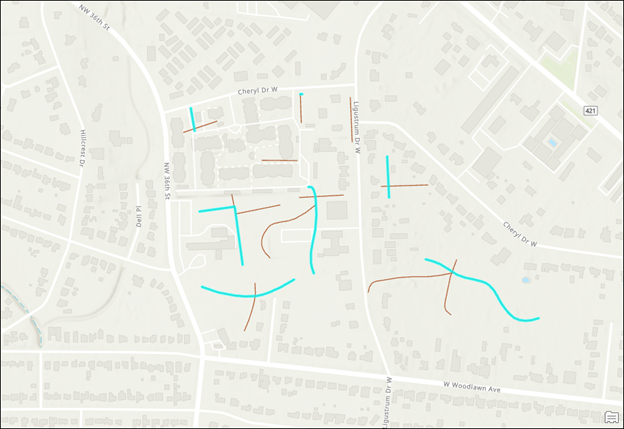
Procedure
- Create a buffer for the polyline feature layer.
- Open the ArcGIS Pro project containing the feature layer.
- Navigate to the Analysis tab and click Tools. The Geoprocessing pane opens.
- In the Geoprocessing pane, search for and select the Buffer tool.
- Configure the parameters of the tool.
- For Input Features, select the feature layer. For this example, a polyline named Pipes is selected.
- For Distance, specify the required distance of the buffer, click the drop-down options in the next box and select the measurement unit. For this example, a unit of 2 Meters is specified for the distance.
- Leave the other parameters as default. Click Run.
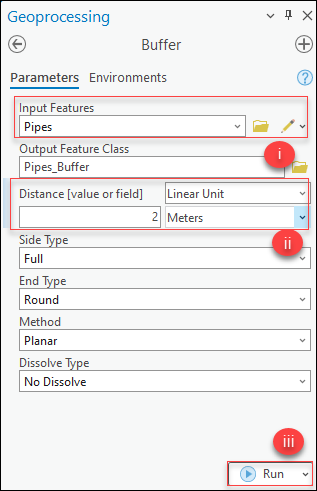
- Dissolve the buffer layer created.
- Navigate to the Analysis tab and click Tools. The Geoprocessing pane opens.
- In the Geoprocessing pane, search for and select the Dissolve tool.
- Configure the parameters of the tool.
- For Input Features, select the buffer layer created in Step 1. For this example, the buffer layer named Pipes_Buffer is selected.
- Uncheck the Create multipart features check box.
- Leave the other parameters as default. Click Run.
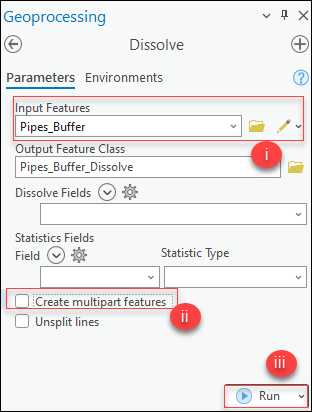
- Add a new field to the dissolved buffer layer and transfer the ‘OBJECTID’ values to ensure only intersecting line segments are merged.
- In the Contents pane, right-click the dissolved buffer layer and click Attribute Table.
- Create a new numeric field type to transfer the values of the OBJECTID field. In this example, the new field is named ID and the data type is Long.
- Copy the 'OBJECTID' values to the newly created ID field. Refer to How To: Copy field values to another field in ArcGIS Pro for instructions.
- Use the Spatial Join tool to transfer the attributes of the dissolved buffer layer to the original features.
- Navigate to the Analysis tab and click Tools. The Geoprocessing pane opens.
- In the Geoprocessing pane, search for and select the Spatial Join tool.
- Configure the parameters of the tool.
- For Target Features, select the original feature layer. For this example, the feature layer named Pipes is selected.
- For Join Features, select the dissolved buffer layer. For this example, the layer named Pipes_Buffer_Dissolve is selected.
- Leave all the other parameters as default. Click Run.
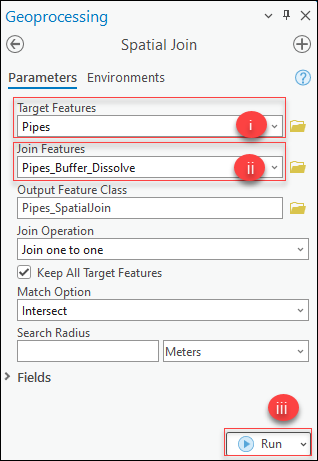
- Dissolve the newly joined feature layer.
- Navigate to the Analysis tab and click Tools. The Geoprocessing pane opens.
- In the Geoprocessing pane, search for and select the Dissolve tool.
- Configure the parameters of the tool.
- For Input Features, select the feature layer with the spatial join. For this example, the layer named Pipes_SpatialJoin is selected.
- For Dissolve Fields, select the field from the drop-down list. In this example, ID is selected.
- Leave the other parameters as default. Click Run.
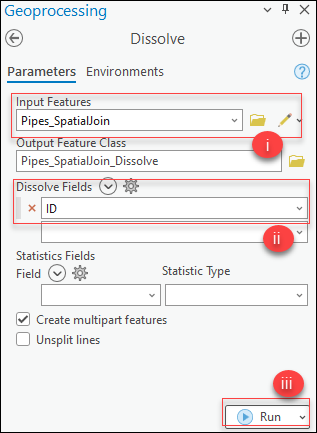
The image below displays the selection of intersecting line segments after batch merging.
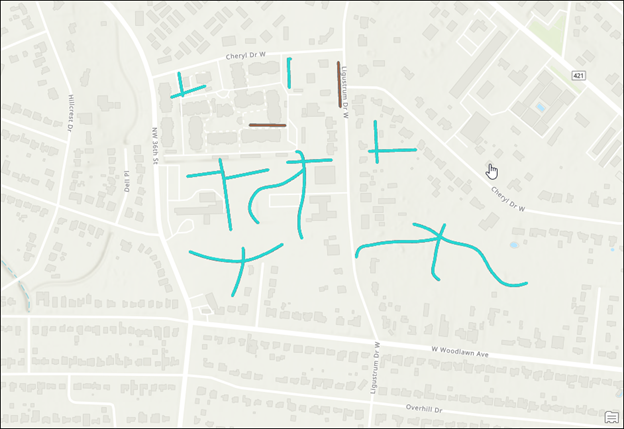
Article ID: 000030876
- ArcGIS Pro 3 1
- ArcGIS Pro 3 0
- ArcGIS Pro 2 9x
Get help from ArcGIS experts
Start chatting now

